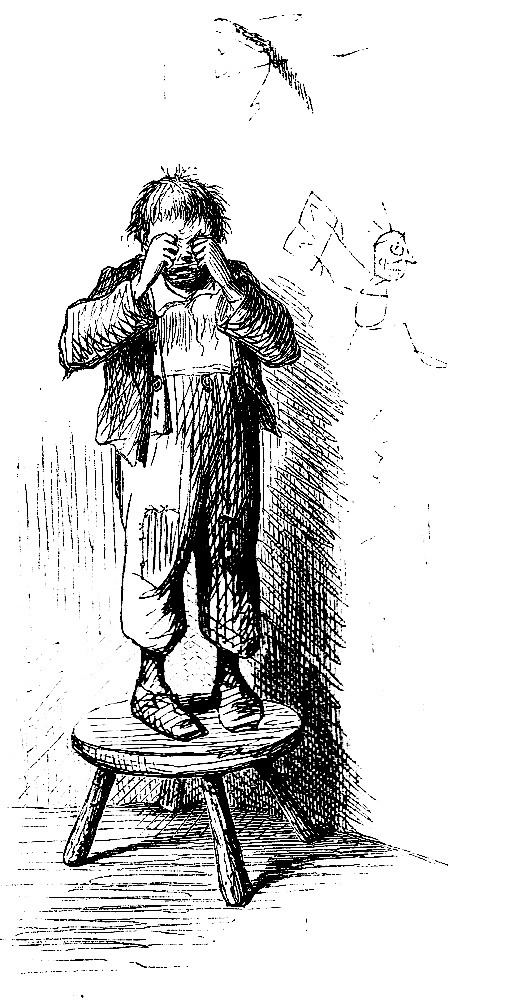Jacob Postlethwaite Punished
John McLenan
24 December 1859
9.9 cm high by 4.7 cm wide (3 ⅞ by 1 ⅞ inches), vignetted.
Fifth uncaptioned headnote vignette for Collins's The Woman in White: A Novel (24 December 1859), 821.
[Click on the image to enlarge it.]
The illustration provides comic relief from the romantic anguish of the young drawing-master as the severe schoolmaster makes the chubby, self-pitying pupil "a sturdy, white-headed boy") at the country school near Limmeridge House stand on a stool in disgrace for spreading stories about a ghost at Mrs. Fairlie's grave. When Marian Halcombe questions the boy, Hartright concludes that the "ghost" is in fact "The Woman in White," Anne Catherick. An amusing touch is the "ghost" stick-figure that some arrant schoolboy has drawn on the wall, just to the right of the lachrymose teller of tall tales.
Scanned image and text by Philip V. Allingham.
